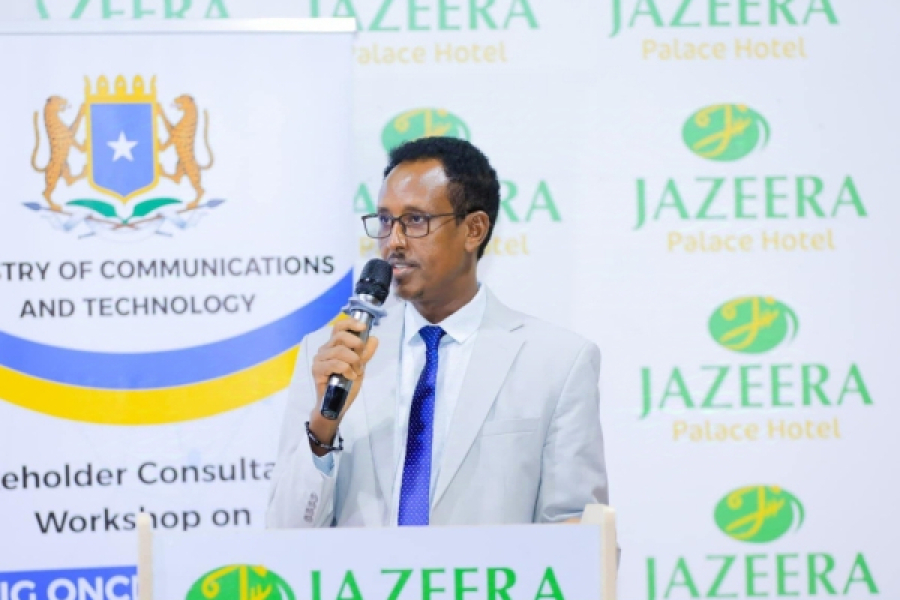Somalia is taking significant steps to enhance its digital infrastructure by introducing a comprehensive regulatory framework for the deployment of fibre-optic networks nationwide.
The National Communications Authority (NCA) is preparing to introduce new regulations for submarine cable landings, focusing on a unified strategy to streamline fibre-optic installation. This initiative is aimed at addressing the country’s fragmented fibre network and creating a more cohesive and accessible infrastructure across the nation
The primary aim of this initiative is to lower the costs associated with fibre-optic infrastructure development while fostering the growth of Somalia’s digital economy.
Read also: Ghana Chamber of Telecommunications moves to stem fibre cuts
Goals of the fibre-optic deployment policy in Somalia
Authorities in Somalia want to improve their internet infrastructure. The International Finance Corporation (IFC) and the telecom regulator are collaborating to create a new regulatory framework for fibre-optic underwater connections.
The government is collaborating with the International Finance Corporation (IFC) and telecom regulators to establish new guidelines that promote undersea cable connectivity. The policy is expected to encourage collaboration among national telecom companies, helping to expand and improve fibre-optic networks across Somalia.
To ensure broad input from various sectors, the Ministry of Communications and Technology held public consultations on November 17 and 18, 2024. These sessions provided stakeholders with an opportunity to share feedback and contribute to shaping the unified fibre-optic deployment policy. The goal is to guide telecom companies in installing and expanding fibre-optic networks, which will not only reduce costs but also enhance national connectivity and support the growth of Somalia’s digital economy.
“The unified fibre-optic deployment policy aims to guide national telecom companies toward collaboration in installing and expanding fibre-optic cables. This initiative will help reduce the costs associated with deploying and expanding fibre infrastructure while promoting the growth of a modern digital economy and national interconnectivity,” said the Ministry of Communications and Technology in a statement.
The country’s existing domestic fiber optic network is dispersed and underdeveloped, even though it is connected to five international underwater cables and will soon have a sixth. Therefore, as the World Bank stated in a report earlier this year, an equitable distribution of available capacity appears to be a long way off.
Read also: How the first ever tokenised wearable technology in Somalia is shaping Africa’s financial landscape
The World Bank’s Digital Economy Diagnostic—Somalia report highlights significant challenges in Somalia’s digital infrastructure, a crucial component for driving economic growth and connectivity. While the connection to five international submarine cables (and an anticipated sixth by 2025) positions Somalia well for global digital integration, the lack of a cohesive and robust domestic fibre network undermines the ability to distribute this capacity fairly across the country.
Key points include:
Underdeveloped Domestic Network: Somalia’s domestic fibre infrastructure is fragmented, with only isolated segments deployed by sub-regional operators. This fragmentation limits national coverage and hampers widespread internet access.
Weak Cross-Border Links: Connectivity with neighbouring countries remains limited, restricting regional digital collaboration and trade opportunities.
International Cable Connectivity: Somalia’s connection to multiple submarine cables offers substantial bandwidth potential. However, large parts of the population remain unconnected or underserved without an efficient domestic network to distribute this bandwidth.
The report underscores the urgency of developing a comprehensive domestic fibre optic network to enhance accessibility, bridge the digital divide, and harness the full potential of existing and future international bandwidth capacity.
This would be essential for fostering digital inclusion, supporting economic development, and advancing Somalia’s integration into the global digital economy. With penetration at just 27.6 percent as of early 2024, according to DataReportal. Expanding Somalia’s national fibre-optic network through this policy has the potential to enhance internet quality and accessibility nationwide.
















